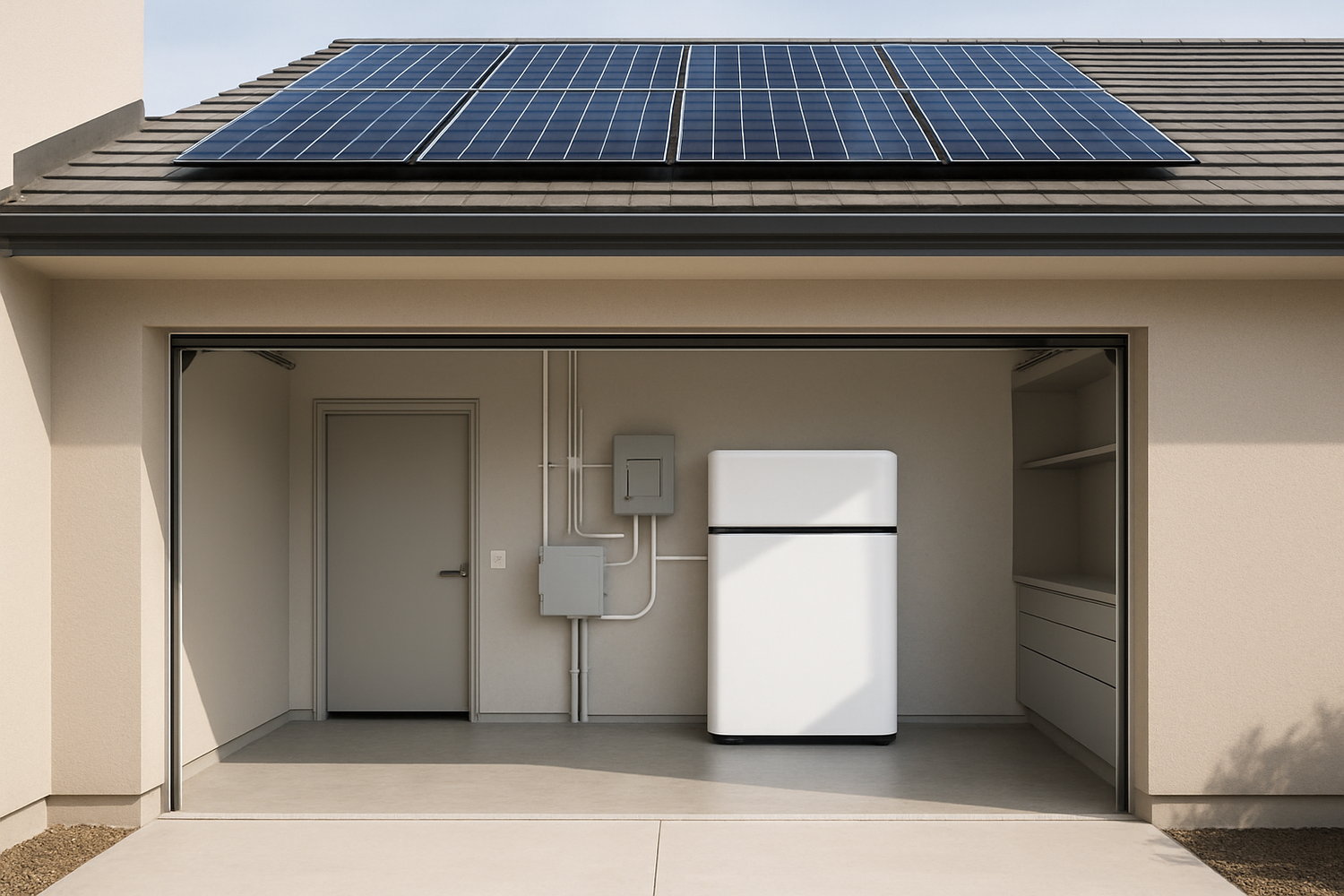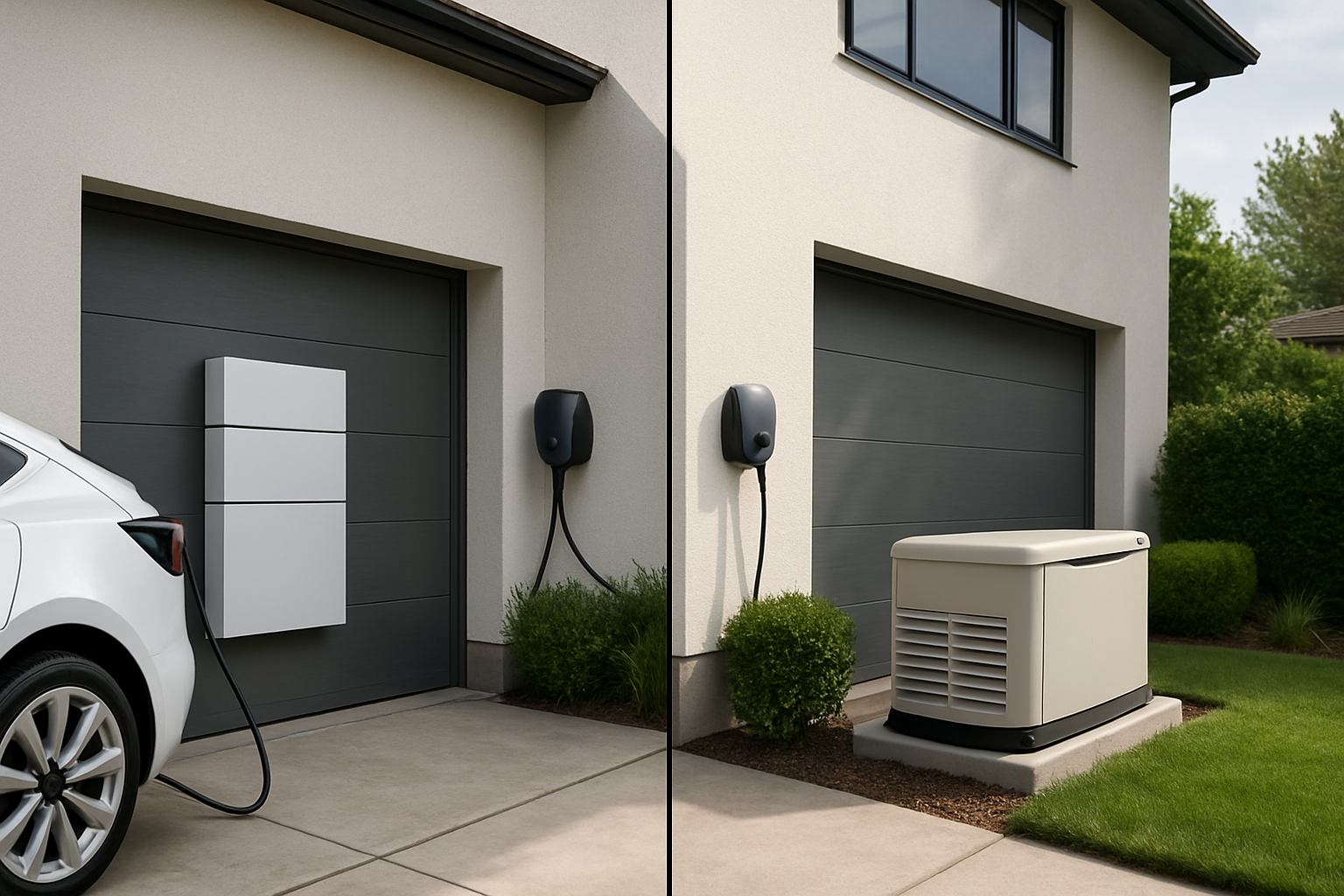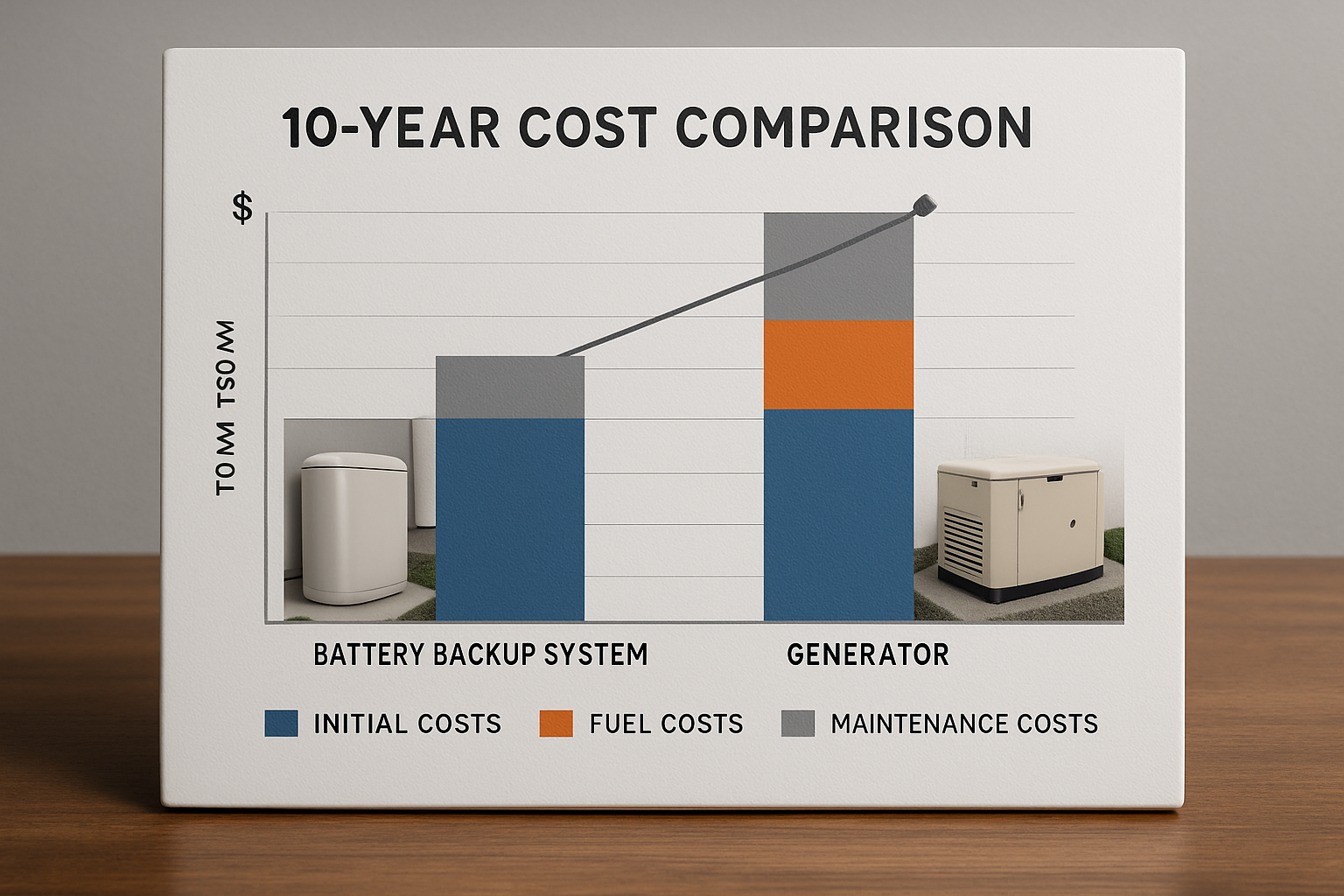Making the switch from a gas generator to a home energy storage system (ESS) represents a significant upgrade in your backup power strategy. After helping hundreds of homeowners through this transition over the past decade, I've developed a comprehensive checklist that eliminates guesswork and prevents costly mistakes.

Pre-Transition Assessment: Know Your Current Setup
Before diving into battery selection, you need a clear picture of your existing power requirements. Start by documenting your gas generator's specifications and actual usage patterns.
Calculate Your Real Power Needs
Most homeowners overestimate their backup power requirements. During my assessments, I typically find that essential loads consume 30-50% less power than expected. Create a priority list:
- Critical loads: Refrigeration, medical devices, security systems (typically 2-4 kW)
- Comfort loads: Lighting, internet, phone charging (additional 1-2 kW)
- Convenience loads: Microwave, coffee maker, entertainment (additional 2-3 kW)
Track your generator's actual runtime during outages. Most residential outages last 4-8 hours, with extended outages (24+ hours) occurring less than twice annually in most regions.
Evaluate Current Generator Performance
Document these key metrics from your gas generator:
| Metric | Typical Gas Generator | Home ESS Alternative |
|---|---|---|
| Startup time | 30-60 seconds | Instant (under 20ms) |
| Noise level | 65-75 dB | Silent operation |
| Annual maintenance cost | $200-400 | $50-100 |
| Fuel consumption | 0.5-1 gallon/hour | Zero fuel required |
Battery System Sizing and Selection
Proper sizing prevents the most expensive mistake in ESS transitions: buying insufficient capacity. Based on IEA Clean Energy Innovation research, battery storage systems demonstrate "very high modularity" with unit sizes ranging from residential applications to utility scale.
Capacity Planning Formula
Use this proven formula for initial sizing:
Required kWh = (Essential Load kW × Desired Hours) × 1.3 safety factor
For example: A home with 3kW essential loads needing 8-hour backup requires approximately 31 kWh of usable capacity (3 × 8 × 1.3 = 31.2 kWh).
Battery Chemistry Considerations
Lithium Iron Phosphate (LiFePO4) batteries have become the gold standard for residential ESS due to their safety profile and cycle life exceeding 6,000 cycles. Unlike your gas generator that degrades with every hour of operation, quality lithium batteries maintain 80% capacity after 10+ years of daily cycling.
Infrastructure and Installation Requirements
The installation requirements for home ESS differ significantly from generator setups. Your new system needs proper electrical integration rather than portable connection points.
Electrical Panel Integration
Most ESS installations require:
- Automatic transfer switch (ATS) or integrated inverter switching
- Dedicated breaker space (typically 60-100 amp)
- Grounding and bonding updates to current code
- Potential service panel upgrades for older homes
Budget $1,500-3,000 for electrical work beyond the battery system cost. This represents a one-time investment compared to ongoing generator maintenance expenses.
Physical Installation Space
Modern battery systems offer installation flexibility impossible with gas generators:
- Indoor installation: Garages, basements, utility rooms
- Temperature controlled: Optimal performance in 32-95°F range
- Compact footprint: Typical residential systems occupy 4-8 square feet
- Wall or floor mounting: Flexible placement options
Solar Integration and Energy Independence
The most compelling advantage of transitioning to home ESS lies in solar integration potential. According to IEA Next Generation Wind and Solar Power analysis, "installing battery storage systems in conjunction with distributed solar PV can effectively increase self-consumption and reduce reverse power flows."
Solar-Plus-Storage Benefits
Unlike gas generators that consume fuel during outages, solar-coupled battery systems can extend backup duration indefinitely during sunny conditions. A properly sized solar array (typically 6-10kW residential) can:
- Recharge batteries during daytime outages
- Reduce grid dependence by 60-90% annually
- Provide energy arbitrage opportunities with time-of-use rates
- Increase home value by approximately $15,000-25,000
Grid-Tie Considerations
Modern inverter technology enables seamless grid interaction. Smart energy management systems can optimize battery charging from both solar and grid sources, automatically switching between backup and grid-tie modes without user intervention.
Financial Analysis and Transition Timeline
The economics of ESS transition extend beyond simple upfront cost comparisons. Factor in total cost of ownership over 10-15 years.
Cost Breakdown Analysis
| Category | Gas Generator (10 years) | Home ESS (10 years) |
|---|---|---|
| Initial investment | $3,000-8,000 | $15,000-25,000 |
| Fuel costs | $2,000-4,000 | $0 |
| Maintenance | $2,000-4,000 | $500-1,000 |
| Total 10-year cost | $7,000-16,000 | $15,500-26,000 |
When factoring in solar integration and utility bill reduction, many homeowners achieve payback within 7-10 years while gaining superior backup power capabilities.
Implementation Timeline
Plan for a 4-8 week transition process:
- Week 1-2: System design and permitting
- Week 3-4: Equipment procurement and delivery
- Week 5-6: Installation and electrical work
- Week 7-8: Inspection, commissioning, and testing
Maximizing Your Investment
Successfully transitioning from gas generator to home ESS requires strategic planning beyond basic backup power replacement. Focus on maximizing system utilization through smart energy management.
Advanced System Features
Modern ESS platforms offer capabilities impossible with traditional generators:
- Load shifting: Charge during off-peak rates, discharge during peak pricing
- Grid services: Participate in utility demand response programs
- Weather integration: Pre-charge batteries before predicted outages
- Remote monitoring: Real-time system performance and diagnostics
These features transform your backup power system into an active energy management platform, delivering value even when the grid remains stable.
Maintenance and Longevity
Unlike gas generators requiring monthly exercise runs and seasonal maintenance, battery systems need minimal attention. Annual system checks and software updates typically suffice for optimal performance.
Quality lithium systems maintain 80% capacity after 6,000-8,000 cycles, equivalent to daily cycling for 15-20 years. This longevity, combined with declining battery costs and improving technology, makes ESS transition increasingly attractive for homeowners seeking reliable, quiet, and clean backup power solutions.
The transition from gas generator to home ESS represents more than equipment replacement—it's an investment in energy independence, environmental responsibility, and long-term cost savings. With proper planning and execution, your new battery backup system will deliver superior performance while eliminating the noise, emissions, and maintenance burdens of traditional generator technology.
References
- IEA Clean Energy Innovation Report - Battery technology analysis and market trends
- IEA Next Generation Wind and Solar Power - Solar-storage integration benefits
- IRENA Malaysia Energy Transition Outlook - Renewable energy system analysis





Leave a comment
All comments are moderated before being published.
This site is protected by hCaptcha and the hCaptcha Privacy Policy and Terms of Service apply.